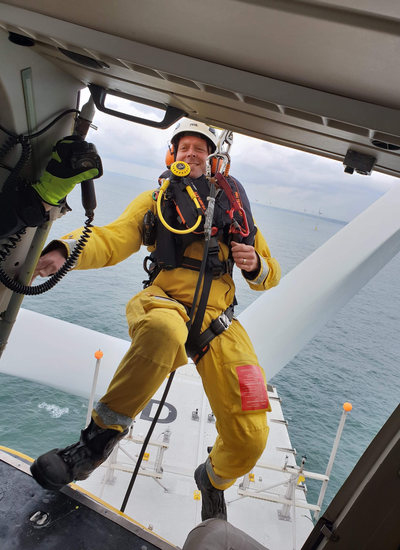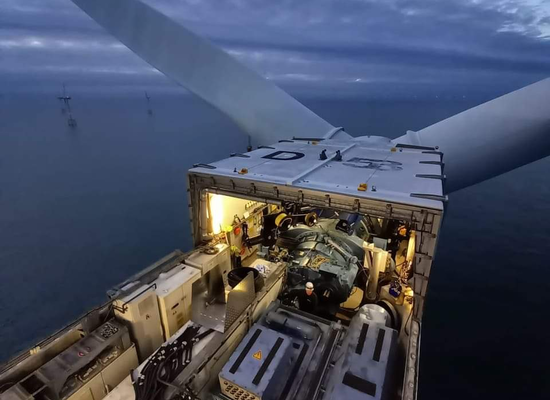

Transport to the windfarm
The maintenance of our wind farm is organized in a day regime. This means that every morning, weather permitting, one or more crew vessels leave the base harbour of Ostend with the C-Power wind farm as a destination. Every evening they return.
The 54 turbines + the Offshore Transformer Station (OTS) can be considered as 55 factories that need maintenance or servicing. If the weather is too bad to sail out, and an intervention is needed, technicians can access the installations by helicopter. The C-Power wind turbines and the Offshore Transformer Station all have a heli platform for winching.

Daily activities performed by C-Power and its contractors
- Annual and semi-annual preventive maintenance; there are on average yearly 11 days per turbine needed to do all preventive maintenance.
- Annual maintenance of the OTS
- Corrective maintenance; troubleshooting and repairs
- Paint works on the steel work of foundations and OTS
- Blade repairs
- Cable and foundation underwater surveys
- Various safety inspections, including ERP (Emergency Response Plan) exercises and safety drills
- Legal inspections (crane, lifts, high-voltage installation)
- Oil pollution exercises in co-operation with the Belgian authorities

Operations
The wind farm is not 24/7 manned, it can be monitored and operated from the Control Centre in the harbour of Ostend. There is always an engineer on duty to follow up on the wind farm.
A Scada system keeps track and logs all warnings and alarms and displays these on the screens set up in the control room. This allows the engineer on duty to take action either via Scada or by co-operating with the service teams on site.
At the C-Power offices, in the harbour of Ostend, there is always a Marine Coordinator present, who coordinates all the movements in the wind farm. The weather conditions are permanently checked and followed. The Marine Coordinator remains permanently in contact (phone or radio) with the crew vessels to ensure safe and efficient transfers and to decide on evacuation, should the weather conditions turn bad.

